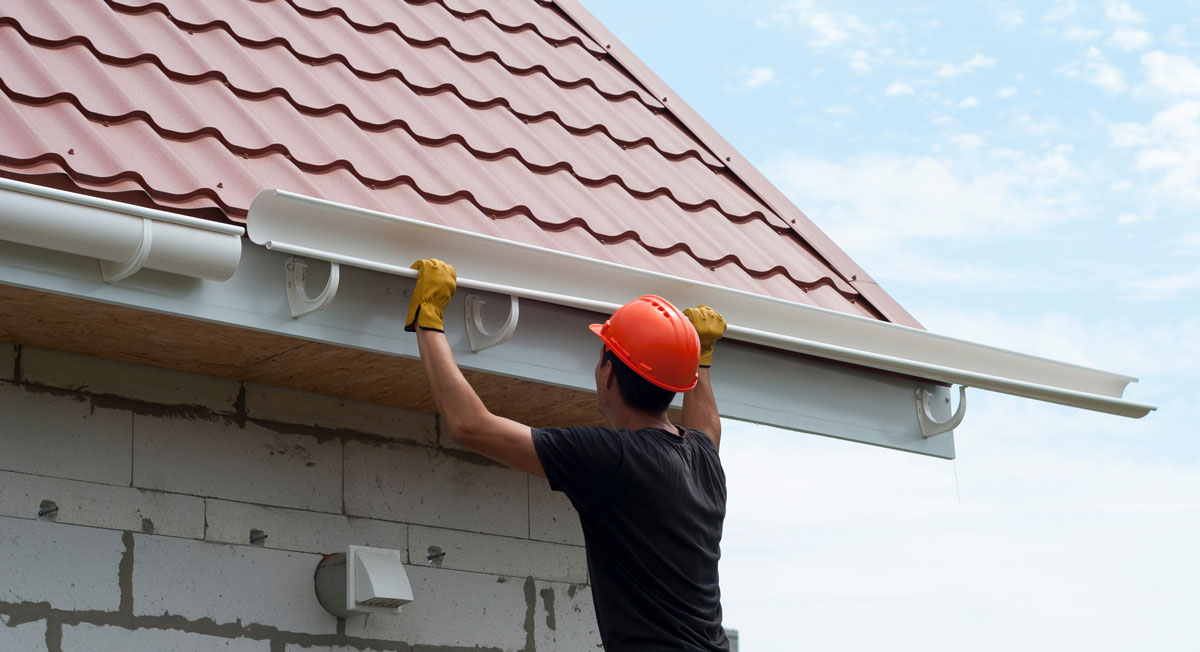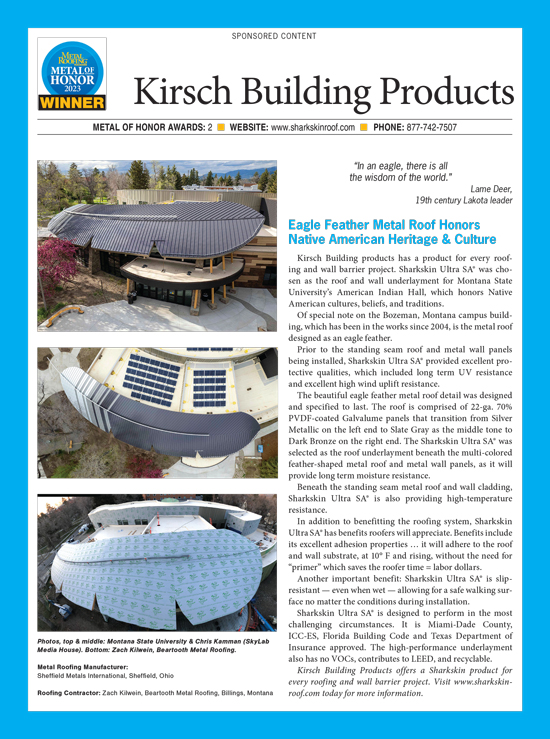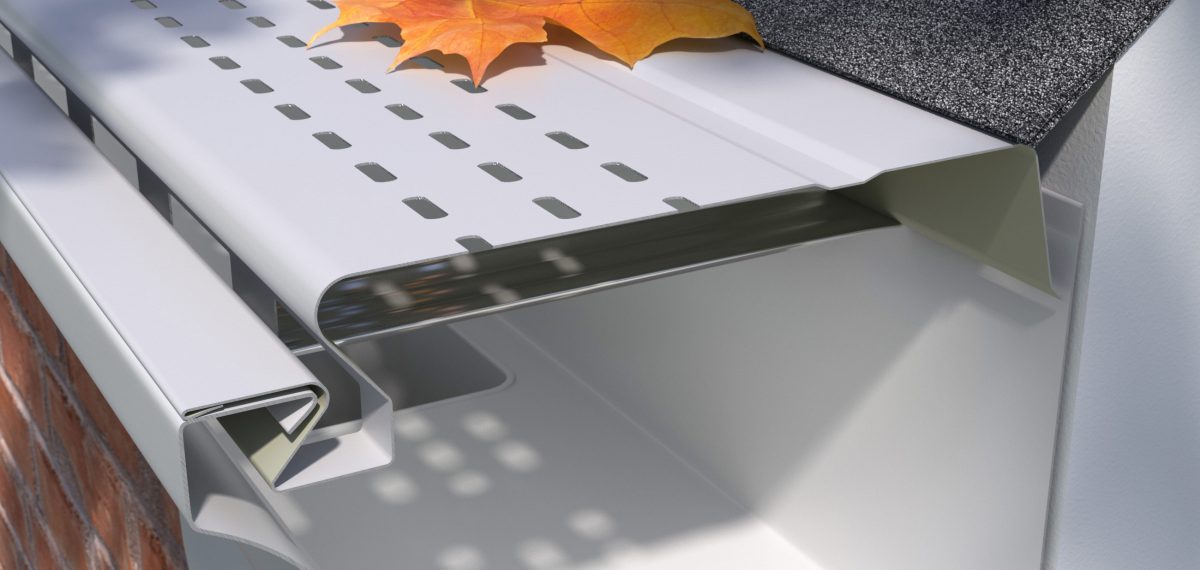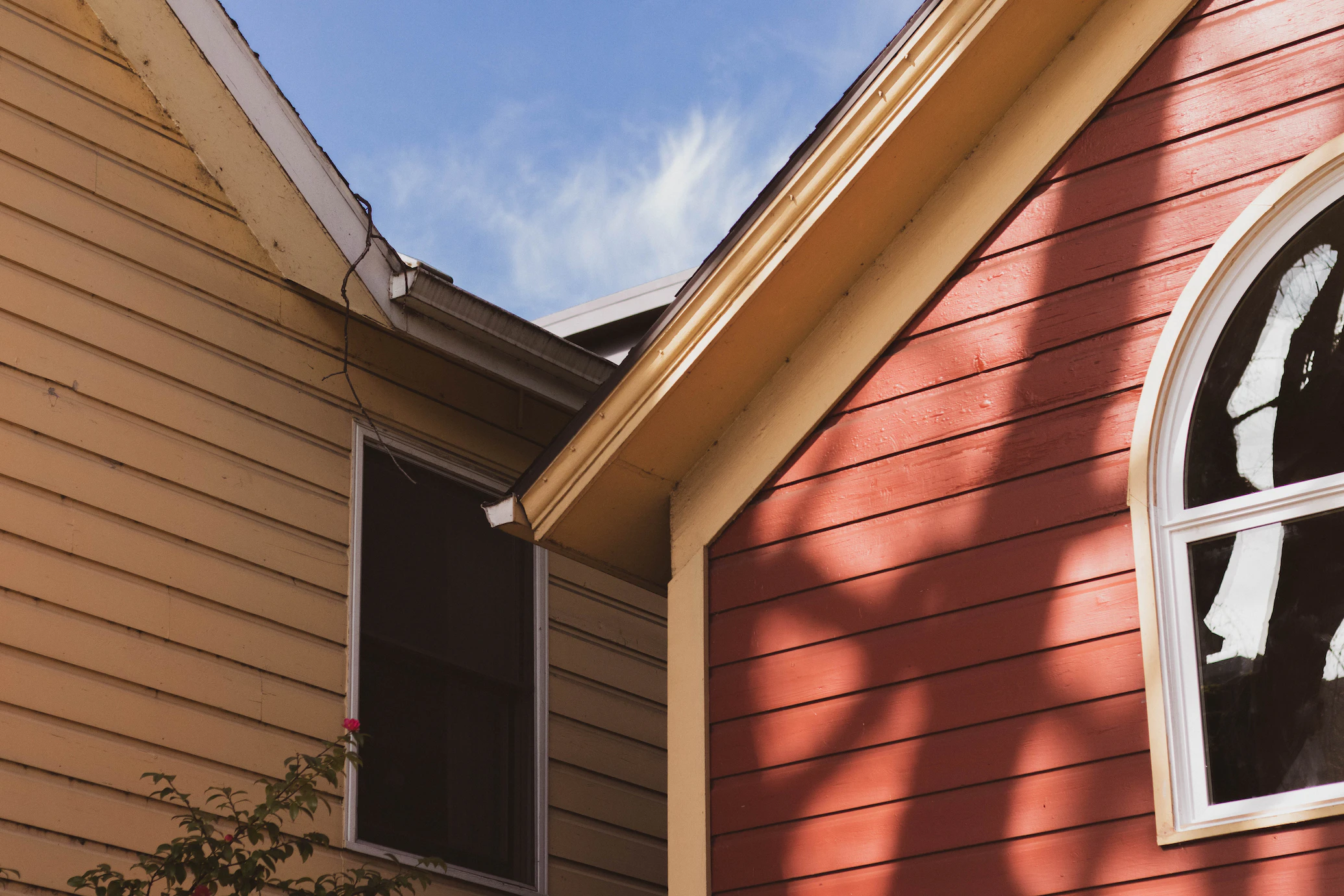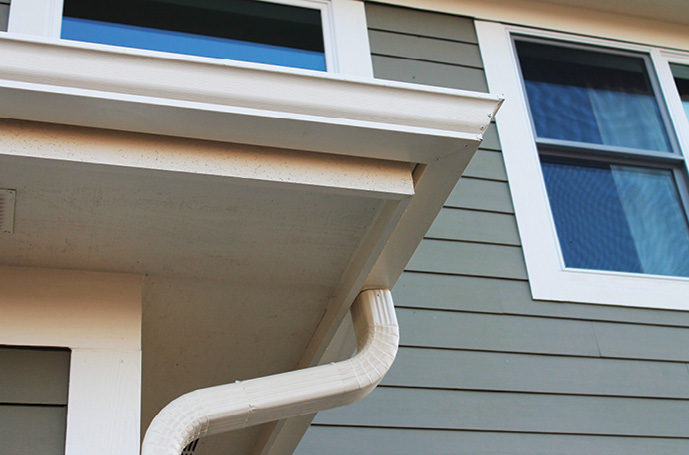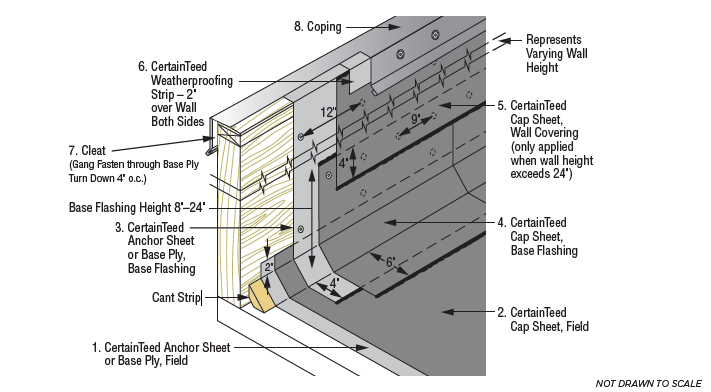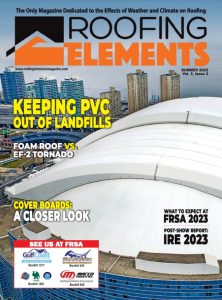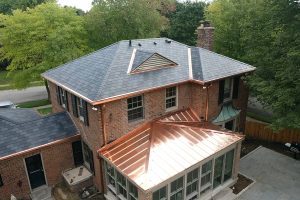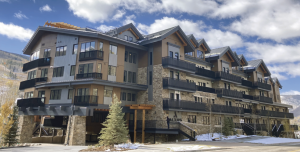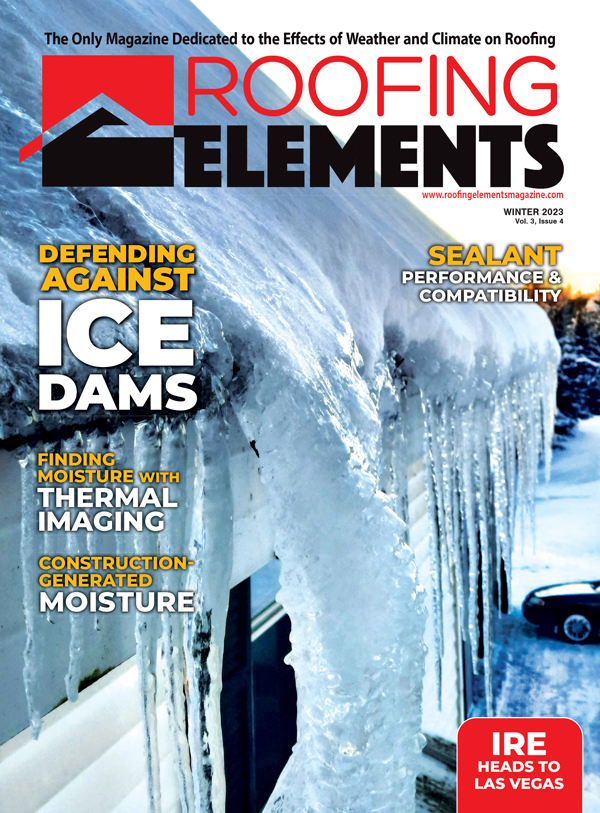The last thing any contractor wants is to be called back to correct problems, and gutter installations are no exception. Let’s take a look at the most common rain handling problems and see what the manufacturers’ recommendations are.
Standing Water in the Gutters
Standing water can be the result of different problems. Naturally, organic debris in the gutters could be the issue; a simple matter of gutter maintenance. Clearing out any debris and flushing the downspout should clear it up. Installation of open face downspouts can help with flushing debris and ice out of the system. You might particularly consider the open face downspout on the north side of a building in a cold climate. The clogged gutter system can possibly be avoided if the customer is educated on proper cleaning and maintenance. Another way to help resolve the problem is to install gutter guards.
However, if the gutter is properly maintained, a likely cause of the issue is the pitch of the gutter moving toward the downspout. Manufacturers advise a drop guideline anywhere from one eighth to a half inch every 10 feet. If the run is over 40 feet, pitch the gutter down from the middle of the run to the downspout at each end. If the pitch is off, the problem could be caused by error on the installer’s part or environmental factors; snow and ice can bend the hangers.
A function check should be performed after installation to verify that the gutter passageways are clear and there are no water collection areas.
Improperly installed gutters may be fixed by repositioning hangers to facilitate water flow.
Water Overflow
Improper pitch can also cause water overflow. If the gutters do not channel the water downhill, it may pool in some areas and overflow the gutters. Further, the gutter slope needs to be consistent or there will be areas in which the gutter will be overwhelmed.
Another reason for overflow may be inadequate gutter capacity. A gutter system should be carefully planned, taking into account factors such as the roof area and the expected rainfall capacity, before deciding on the appropriate gutter size.
Proper gutter sizing can be found by multiplying the square footage of the drainage area by the roof-pitch factor and the maximum rainfall intensity. This calculation takes into consideration both the individual aspects of the building in question and the climate in which it resides and it can help properly size the gutter to the project.
The system also needs to be designed with the correct size and number of downspouts for the length of the gutters and the anticipated amount of water flow. The design should also take into consideration where those downspouts should be placed. If the downspouts cannot accommodate the amount of rainwater being sent their way, the water will overflow the gutters. Adding additional downspouts in the right areas can help distribute the water more evenly throughout the system.
Finally, clogged gutters can also be the culprit in this scenario.
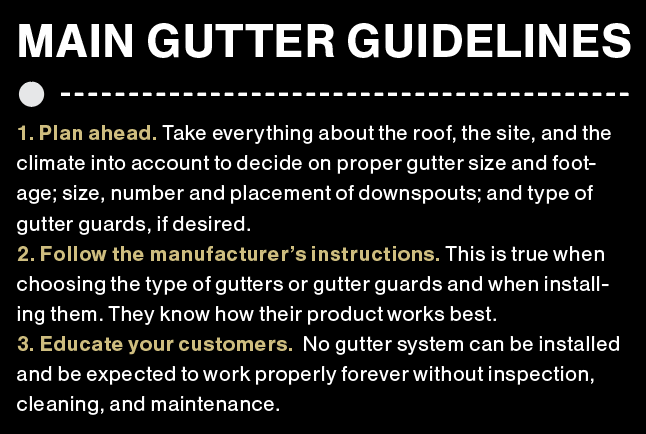
Water Drips, Siding Stains
If water is dripping behind the gutter and staining the siding, it is most likely the result of missing, damaged, or improperly installed gutter flashing. Flashing may even be diverting water between the gutter and fascia. The gutter flashing’s sole purpose is to guide the water from the roof into the gutter so that the dripping and staining is avoided, so check that it is properly placed.
If the flashing is not properly installed to divert the water into the gutter system, then the gutter hangers will need to be removed to allow flashing to be reinstalled so that the water runs into the gutter. The flashing should create a tight seal between the roof edge and the gutters to prevent seepage and staining.

This problem can also be a sign that the gutters installed are unequal to the job at hand and, due to their small size, water is splashing behind the gutter.
During installation, ensure that the roof has an adequate overhang that reaches beyond the fascia, and three to four inches beyond the gutter. If it does not, the water may simply run down the fascia, and staining can be the result. If the gutter is installed too far from the roof’s edge, rain blown by the wind may miss the gutter.
Caulked joints or end joints may be cracked and in need of repair, or ice may be blocking the course and when water comes from behind it overflows the gutter.
Leaves and twigs and other debris clogging the gutter can cause water to drip onto siding or other undesirable places also.
Gutter Sag
This problem often goes back to the design of the gutter system. If the gutter hangers are too far apart, the weight of the gutter along with rainwater can cause a section of the gutter to sag. When deciding on spacing of hangers, the amount of expected water volume must be taken into account. Depending on the climate, ice and snow may also add to the weight and can be responsible for pulling hangers out or it can damage a section of gutter causing sagging.
Debris in the gutters can add to the weight that gutter hangers must accommodate and should be cleaned out periodically.
Another contributing factor to gutter sag can be how securely the gutters were attached to the fascia board or roof edge. Be sure to follow the advice of the manufacturer in regard to the fasteners and spacing, which can vary according to gutter material, size, and anticipated weight load; a minimum of hangers every two feet on center is advised.
Sag can also be a function of the strength and quality of the gutters, hangers, and brackets, so particularly in places with high volumes of rainwater and/or snow and ice, a stronger material is called for. Some gutters feature flanges which joined together with hangers can increase stability. Further, screws can be added to hangers for an even stronger system.

When sagging occurs, ensure that the fascia is not rotted. Boards may need to be replaced. In fact, make sure the gutter is unharmed; it will often need to be replaced also.
When sagging occurs, it is important to resolve it promptly to avoid further damage to the gutters. Adding hangers or brackets at appropriate intervals can make the system stronger, redistributing weight and providing support.
Seam Leaks
Seams often leak because they weren’t properly sealed or the sealant failed. Aluminum rivets can pull out due to expansion and contraction leaving all the work to the sealant which can dry out and get brittle over time.
Seams can be repaired by removing the old sealant, cleaning the area, and applying new sealant to create a watertight bond. Elastomeric sealants are good choices because they won’t crack as the gutters expand and contract as temperatures change. Apply one bead of sealant between the joint and one over the joint for double the protection. A brush may be used to work sealant into joints.
When joining gutter pieces, ensure that the uphill section is overlapped over the downhill section so that water flows easily over the seam and actually has to flow uphill to get between the seams if the sealant should fail or weaken.
As gutters age, materials can degrade. Connectors, fasteners, sealants and other components should be replaced and/or reinforced as needed, ensuring proper alignment and stability of the system and reducing the likelihood of leaks. Perhaps a “seasonal check-up” or periodic re-haul of the system is an upgrade you can offer customers.
Gutter leaks can be due to low quality gutters and/or accessories or systems that are not the best choices for the climate in which they were installed.
Seamless gutters are manufactured from a single piece of material, and if a customer has had recurrent problems with leaky gutters, they might want to invest in them.
Gutter Guard Fails
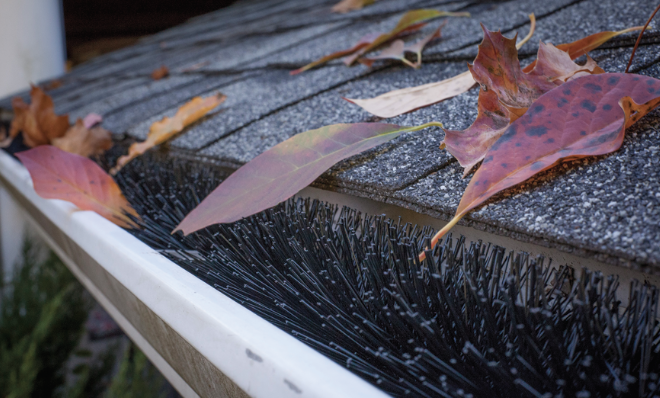
One reason gutter guards may not be performing satisfactorily could be that the type of gutter guard chosen is not right for conditions. Consider the amount of tree coverage, the type of debris the system will contend with, the roof type and pitch, and the type of gutter system involved when choosing a gutter guard. All of these pieces should be compatible. Some questions you should ask before choosing or advising a gutter guard to a customer: Is the gutter profile a K style, a half-round, or a box gutter? Are the roof materials asphalt shingles, metal, cedar, slate, tile, or a membrane? Is the debris largely tiny leaves, large leaves, pine needles, or roof shingle granules? Are the gutter hangers attached to the fascia board or are they suspended from the roof deck? The answers to these questions will help you determine the type of gutter guard you should advise for the gutter system. If it is unclear, consult with a gutter guard manufacturer regarding the particular project at hand.
Sometimes the gutter guards may not be installed correctly; ensure they fit securely and cover the entire length of the gutter. Follow manufacturer instructions when installing.
A clogged gutter guard is not going to perform satisfactorily. Gutter guards need to be periodically inspected and cleaned; ensure that the customer understands that at the outset.
If the environment is debris intensive, then gutter brush inserts, foam filters, or downspout strainers could be integrated into the system to assist with clogging issues.
Thank You to The Industry Experts!
Mike Milliman, Gutter Supply, www.guttersupply.com
Niles Hickman, Edco, www.edcoproducts.com
Randy Schreiber, GutterBrush, www.gutterbrush.com
Jonathan Giacchi, Englert, www.leafguard.com
Adam Schouten, Advanced Architectural Sheet Metal & Supply,
www.advarchsm.com

